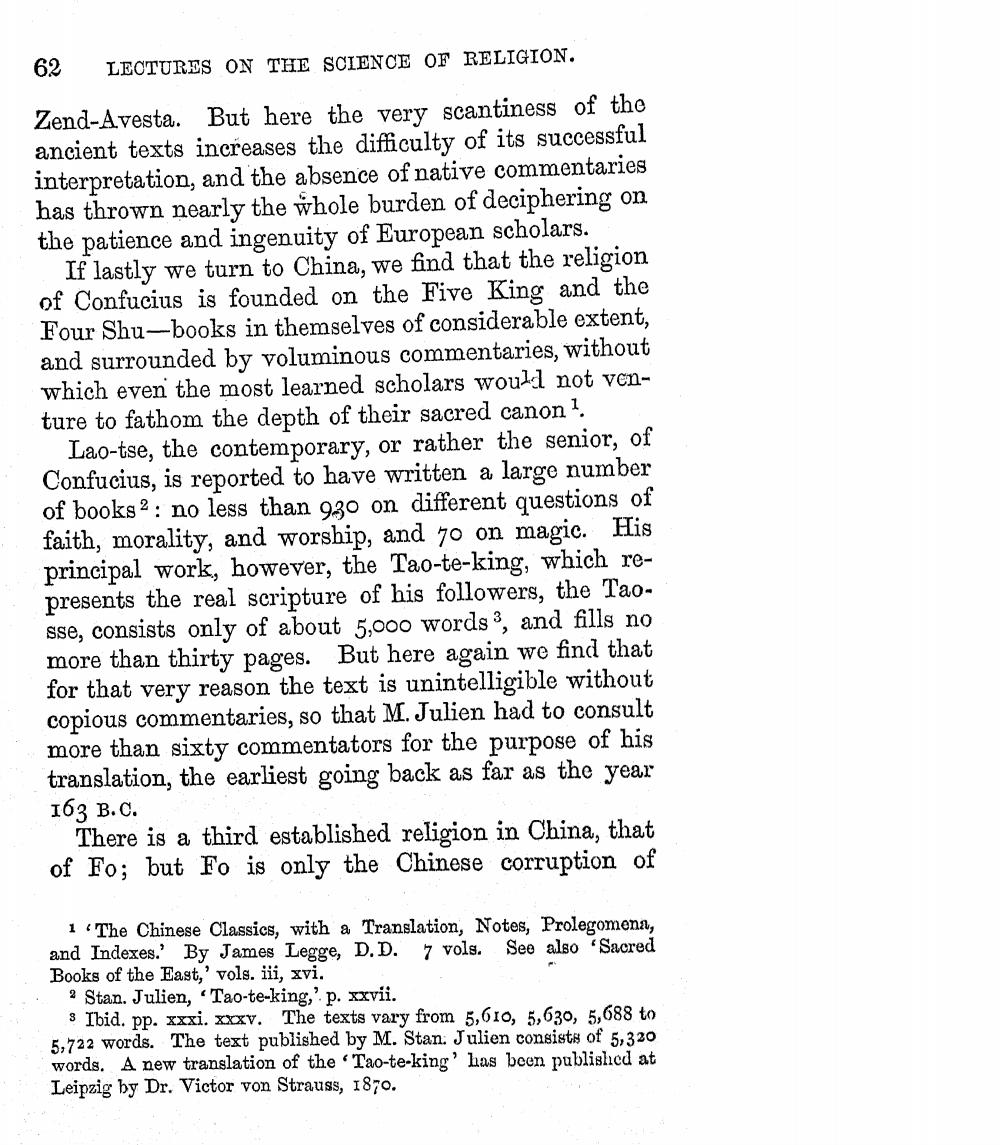________________
62
LECTURES ON THE SCIENCE OF RELIGION.
Zend-Avesta. But here the very scantiness of the ancient texts increases the difficulty of its successful interpretation, and the absence of native commentaries has thrown nearly the whole burden of deciphering on the patience and ingenuity of European scholars.
If lastly we turn to China, we find that the religion of Confucius is founded on the Five King and the Four Shu-books in themselves of considerable extent, and surrounded by voluminous commentaries, without which even the most learned scholars would not venture to fathom the depth of their sacred canon1.
Lao-tse, the contemporary, or rather the senior, of Confucius, is reported to have written a large number of books 2: no less than 930 on different questions of faith, morality, and worship, and 70 on magic. His principal work, however, the Tao-te-king, which represents the real scripture of his followers, the Taosse, consists only of about 5,000 words 3, and fills no more than thirty pages. But here again we find that for that very reason the text is unintelligible without copious commentaries, so that M. Julien had to consult more than sixty commentators for the purpose of his translation, the earliest going back as far as the year 163 B.C.
There is a third established religion in China, that of Fo; but Fo is only the Chinese corruption of
1 The Chinese Classics, with a Translation, Notes, Prolegomena, and Indexes.' By James Legge, D.D. 7 vols. See also 'Sacred Books of the East,' vols. iii, xvi.
2 Stan. Julien, Tao-te-king," p. xxvii.
s Ibid. pp. xxxi. xxxv. The texts vary from 5,610, 5,630, 5,688 to 5,722 words. The text published by M. Stan. Julien consists of 5,320 words. A new translation of the Tao-te-king' has been published at Leipzig by Dr. Victor von Strauss, 1870.




